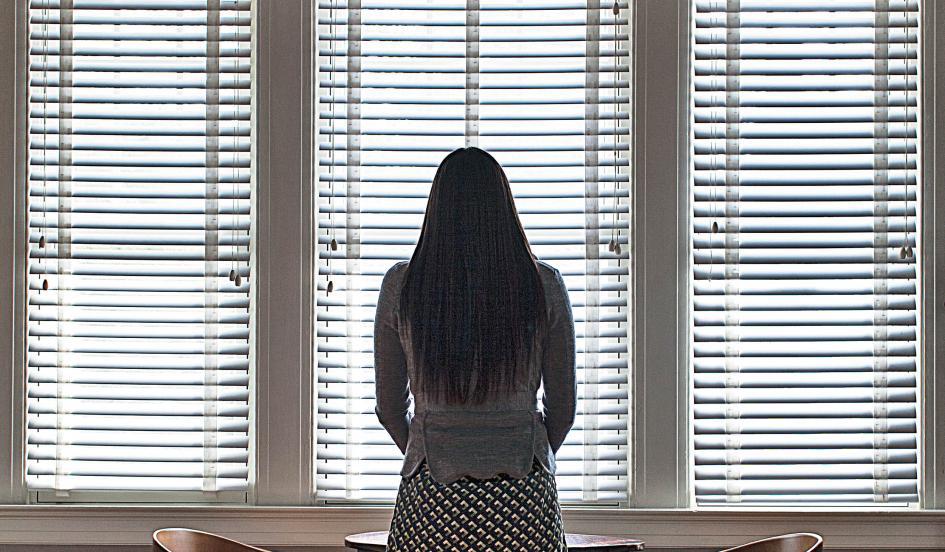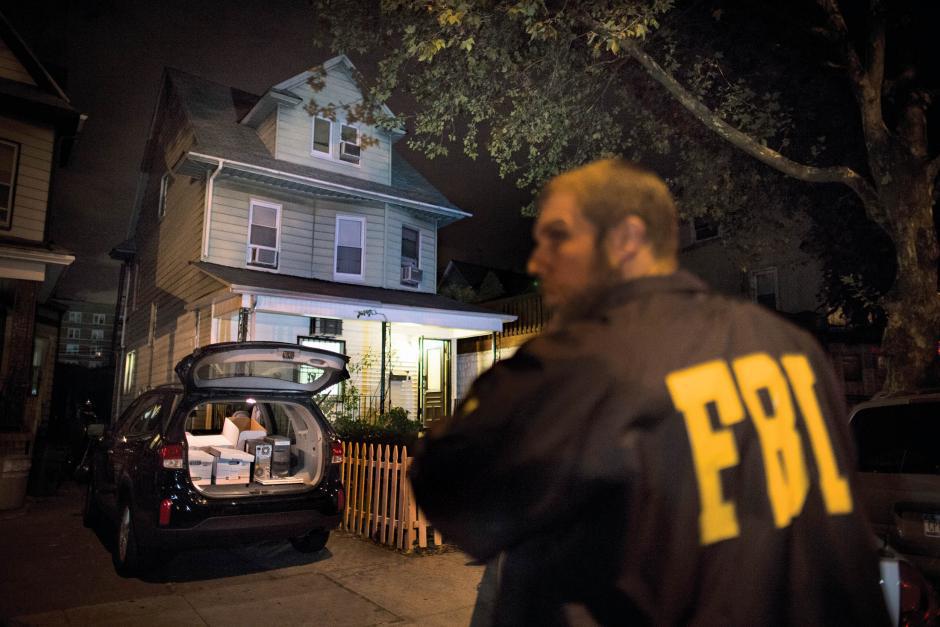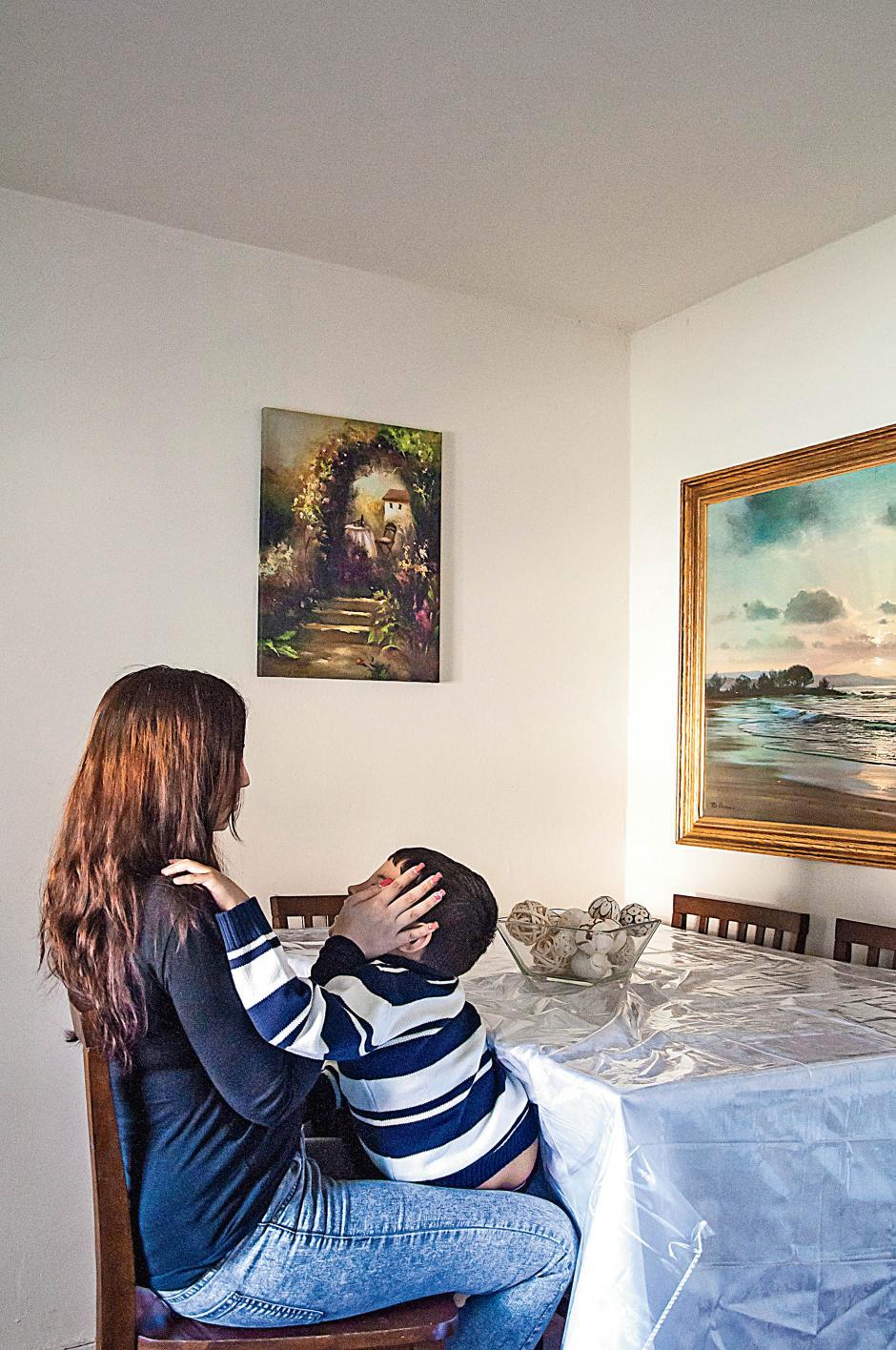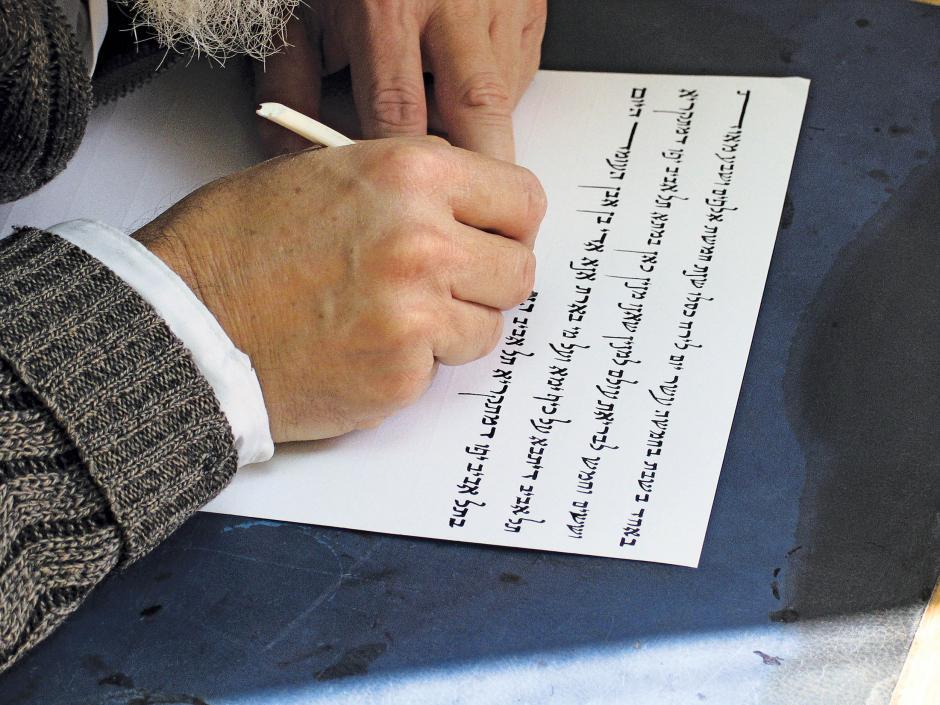|
Fighting to Be Free: The Lengths Orthodox Jewish Women Will Go to for a 'Get'
By Abigail Jones
“Basically, what we are going to be doing is kidnapping a guy for a couple of hours and beating him up and torturing him and then getting him to give the get,” Rabbi Mendel Epstein told two potential clients. It was August 14, 2013, and he was sitting in his home in Lakewood, New Jersey, with a young Orthodox Jewish woman and her brother. She had sought out Epstein because she desperately wanted to divorce her husband, who was refusing to give her a get, the document that formally dissolves a marriage under Jewish law. In Orthodox Judaism, only husbands can give gets, and while most do, those who refuse wield enormous power over their wives. Even with a civil divorce decree in hand, a woman is not divorced in the Orthodox Jewish world until her husband gives her a get. Until then, she is an agunah, a “chained” woman. If she falls in love and decides to remarry without the get, she would be considered an adulteress, and her children from that union would be shunned. Epstein, an Orthodox Jewish rabbi in Brooklyn, New York, and Lakewood, had a reputation for facilitating divorces. On that August day a couple of years ago, he explained to the woman and her brother how he would persuade her husband to give her a get. He mentioned a team of “tough guys” who could torture her husband with electric cattle prods, handcuffs and karate and suffocate him using plastic bags. “I guarantee you that if you’re in the van, you’d give a get to your wife,” he said. “Hopefully, there won’t even be a mark on him.” Epstein said his so-called “good deed” came with a price: $10,000 for the beth din, the rabbinical court, to approve the scheme and $50,000 to $60,000 for those tough guys—one of whom was Epstein’s son David—to do the dirty work. Over the next six weeks, the young agunah and her brother paid up: $10,000 for Epstein to arrange the kidnapping and beating and another $20,000 to cover part of the fee for his work. Epstein told them to give him a check for the remaining $30,000 on the day of the kidnapping. A few weeks later, on September 25, the brother spoke to Epstein by phone to finalize the details. They discussed a warehouse the rabbi had in mind for the kidnapping, as well as how he planned to lure the husband there. When the brother asked if it was necessary for his sister’s husband to enter the warehouse, Epstein said it might not be: “They don’t need him for long, believe me. They’ll have him in the van, hooded, and [the get] will happen.” Around 8 p.m. on October 9, 2013, Epstein’s eight-person “kidnap team” arrived at the New Jersey warehouse in two dark minivans. Some of them put on ski masks, Halloween masks and bandannas and entered the building while others patrolled outside with flashlights. Once the kidnapping team got inside, they reviewed their plan—how they would tie up the husband, take his phone and keep him away from the windows while they did whatever else they planned to do. They had a thorough plan that left out one important contingency: Their clients for the evening’s kidnapping were undercover FBI agents. When law enforcement officers rushed into the warehouse and arrested Epstein’s snatch team, they found, according to the indictment, surgical blades, plastic bags, a screwdriver, a rope and ceremonial items used in recording gets. Epstein, however, was nowhere in sight. As he’d explained in an earlier meeting with the agunah’s brother, which was secretly taped, he would be out in public, firming up his alibi in case the police got involved. Epstein, 69, along with Martin Wolmark, an Orthodox rabbi who heads a yeshiva in Monsey, New York; rabbis Jay Goldstein and Binyamin Stimler of Brooklyn; and David Epstein, have been charged in New Jersey federal court with conspiracy to commit kidnapping and related charges. Each faces up to life in prison and a $250,000 fine. Earlier this year, Wolmark pleaded guilty of conspiring to commit extortion. He faces up to five years in federal prison and a $250,000 fine, and will be sentenced in May. Six co-conspirators, including two of Goldstein’s sons, have already pleaded guilty. The trial for Epstein, David Epstein, Goldstein and Stimler began February 18 in federal court in Trenton, New Jersey. In addition to that FBI sting, the indictment drew on a kidnapping in November 2009, when a victim was lured from Brooklyn to Lakewood, tied up in a van, assaulted and shocked with a stun gun until he agreed to give his wife a get. A second kidnapping allegedly took place on October 17, 2010, when David Epstein and accomplices tied up a victim and beat him into giving the get. On August 22, 2011, David Epstein and others allegedly barged into a man’s home and assaulted him and his roommate, punching them in the face, handcuffing and blindfolding them, and binding their legs. Epstein’s alleged kidnapping service is neither a crazy aberration nor a hot new trend in Brooklyn’s Orthodox neighborhoods. Beat-downs and kidnappings are a long-whispered-about last resort for agunot who face years chained to men who won’t let them go. Controlled by husbands who manipulate their position, wield emotional and legal power, and leverage their marriages for their own gain, these women are a gruesome example of domestic abuse. Who, then, are the real villains in this story? Epstein and his so-called “kidnap team” or the vengeful husbands who were allegedly taken and beaten up for refusing to give their wives gets? Gotta Give to Get Divorce is rarely a simple matter for any couple, but in the Orthodox Jewish community, it can be a ruthless and often brutal process, especially for women. When a beth din summons a husband to participate in the get process, he can respond in three ways: agree to give the get; go to court, provide his reasons for refusing and wait for the rabbis’ decision; or ignore the request. When the latter happens, the beth din issues a contempt order, called a seruv, stating that the husband is not complying with Jewish law and instructing his community to shun him in hopes that the social and religious cold shoulder will convince him to change his mind. Men refuse to give gets for all sorts of reasons: money, child custody, leverage in their divorce proceedings and plain old spite. There are no hard statistics on how long the average woman remains shackled, but leaders in the Orthodox community estimate anywhere from one to five years, though some divorces drag on for decades. “Women die agunot!” says Sharon Weiss-Greenberg, executive director of the Jewish Orthodox Feminist Alliance. “There was a story about the oldest agunah, and she died at 70 or 80 and spent the majority of her life as an agunah.” A recent study by the Mellman Group offered more concrete insights: Between 2005 and 2010, there were 462 cases of agunot across North America. One-third of those cases occurred in the final year of the study, and half took between one and five years to resolve. Thirty-five percent of the organizations polled were unable to estimate how long a resolution would take. Centuries ago, Jewish communities were close-knit enclaves with a centralized rabbinic authority. It was harder then for Jews to assimilate into society, so it was easier for the community to police itself. If a husband ignored the rabbis’ advice and refused to give his wife a get, he’d be shunned and there wasn’t anywhere for him to go. Today’s agunah problem is another beast entirely. “The husband is available—he’s right in front of us—but he’s not prepared to give a get,” says Rabbi Shlomo Weissmann, director of the Beth Din of America, a leading Orthodox religious court in New York. Rabbinic literature describes how to handle get refusal, but these treatments are limited to archaic situations, like a husband lost at sea or missing in action at war, not cases where he withholds a get to control divorce proceedings. In Israel, men who refuse to give their wives gets can lose their driving privileges or get thrown in jail. In the U.S., however, secular courts cannot meddle in Jewish divorce proceedings. Groups like the Organization for the Resolution of Agunot (ORA) organize public shamings and rally support on behalf of agunot. Their tactics include staging protests in front of a husband’s home and office, urging his community and synagogue to keep him out, raising awareness in the media and applying financial and legal pressure. Last February, Rabbi Jeremy Stern, executive director of the ORA, walked into a minyan (prayer service) at Yeshiva University in Manhattan, spotted Yechiel Friedman and publicly removed him from the service. Friedman has allegedly refused to give his wife a get for nearly 18 years. “You’re not welcome! You can leave now!” Stern is seen saying in a YouTube video of the event, which went viral. “Give your wife a get. Eighteen years, Yechiel. It’s ludicrous! You’re a rasha [a wicked person]!” The ORA condemns all acts of violence, and while there are circumstances in which Jewish law allows for the use of force, says Weissmann, “in a civil society where the rule of law prevails, the use of force is not an option.” Thus the impossible reality sets in. As Beverly Siegel, the filmmaker behind the 2011 documentary Women Unchained, puts it, “Here’s a woman’s life hanging in the balance. American law can’t help you. Jewish law has reached the limits of what it can do for you. What are you going to do?” Kosher Smartphones The ultra-Orthodox community is struggling to navigate today’s rapidly changing world. In New York City last year, at least four baby boys developed herpes—and many are pointing to the ultra-Orthodox ritual of metzitzah b’peh, in which a rabbi sucks blood from an infant’s circumcised penis, as the cause. Last year, a group of ultra-Orthodox men delayed an El Al flight from New York to Israel when they refused to take their assigned seats. The reason? They cannot sit next to women. Last January, the ultra-Orthodox Israeli newspaper HaMevaser erased Angela Merkel, the chancellor of Germany, from a photo of world leaders marching against terrorism in Paris. In 2011, an ultra-Orthodox paper in Brooklyn edited Secretary of State Hillary Rodham Clinton and National Security Council member Audrey Tomason out of a photo of the White House Situation Room during the Osama bin Laden raid. Both decisions were made due to modesty rules within the Orthodox tradition. And in 2013, a viral video surfaced featuring young, fresh-faced Orthodox men admitting how scared they once were at the prospect of marrying older women. “Four months older,” says one. “Exactly one year and three days older,” says another. The PSA wasn’t produced by The Onion; it was made to convince young Jewish men that it was OK to marry “up.” Whether it’s dealing with a “kosher smartphone” and the controversial new Shabbos App, or taking over New York’s Citi Field to protest the dangers of the Internet, or addressing today’s agunot crisis, there’s one daunting fact for the Orthodox community: Jewish law cannot be altered. “No one who claims to be Orthodox would say, ‘We’re just going to annul this part of the law.’ You can’t do that,” says Mark Bane, a partner and chairman of the Business Restructuring Department at Ropes & Gray, who co-founded Kayama, a nonprofit that encourages nonobservant divorcing Jews to obtain gets. “We are committed to the rules. We just want to figure out a way to stop people from abusing the rules. A man who refuses to give a get is a bad guy! Laws don’t stop people from being bad people.” Last year, a rabbinical court in Israel granted a special kind of get to a 34-year-old woman whose husband had been in a coma for seven years. The get zikui, as it’s called, involves a religious court acting on behalf of the husband to give his wife a get. “Even though the husband says, ‘I don’t want to give her the get,’ the court says, ‘Deep down, we know you want to give the get so we want to act on your behalf,’” says Rabbi Asher Lopatin, president of Yeshivat Chovevei Torah Rabbinical School in New York, a leading Modern Orthodox yeshiva. But the approach, which originated in prewar Europe, is rare today. A more modern solution to the agunot crisis is the halachic prenuptial agreement. The prenup, which is enforceable in the U.S., states that the couple must go to the Beth Din of America if they decide to divorce and holds the husband financially responsible for his wife until the get is given. “It deals specifically with the get, and it’s worked 100 percent of the time in cases of get refusal,” says Stern. According to a 2009 survey by the Rabbinical Council of America, which represents mainstream Modern Orthodox rabbis in the U.S., 70 percent of respondents either encourage or require the use of a halachic prenup before they perform a marriage ceremony. “In the cases we handle, it’s very rare for a young Modern Orthodox couple married within the last 10 years to run into an agunah problem, because typically they’ve signed the prenup and it works seamlessly to solve the problem,” says Weissmann. “Within more Haredi communities, the prenup hasn’t been as widely adopted, but it’s possible that as the problem continues to present itself and not get better, it could be more embraced.” The prenup does have limitations, “especially for people for whom money is no object,” says Rabba Sara Hurwitz, dean of Yeshivat Maharat in Riverdale, New York, the first yeshiva to ordain women as Orthodox clergy. “But I think that any clergyperson who performs a wedding without a religious prenup is unconscionable.” Those outside Orthodox Judaism often wonder why agunot don’t simply leave their community and move on. “People say, ‘Why doesn’t she just forget this backwards patriarchal system? She has her civil divorce!’” says Stern. “Our response to that is, what fundamentally underlies get refusal is power and control. Get refusal is a form of domestic abuse. “Asking her to give up her religion is asking her to accept her abuse and have it extend through all aspects of her life and her sense of self,” Stern continues. “It’s pointing the finger in the direction of the victim rather than the aggressor.” ‘The Orthodox Hit Squad’ The trial against Epstein, David Epstein, Goldstein and Stimler has made headlines as much for the salacious details as for the largely unfamiliar Orthodox traditions at the center of the case. Epstein and his alleged co-conspirators have been referred to as “the Orthodox hit squad,” and their actions have been likened to “a scene out of The Sopranos.” Menachem Teitelbaum testified that he was wakened one night by a man punching him in the face while two or three others held him down and tried to tie his arms and legs. At one point, he said someone stuffed dirty socks into his mouth. In the background, Teitelbaum could hear men beating up his roommate, Usher Chaimowitz, and demanding that he give his wife a get. Teitelbaum said his beatings lasted two hours. In his opening statement, Epstein’s attorney, Robert Stahl, described his client as a “champion of women’s rights.” (Epstein wrote the 1989 book A Woman’s Guide to the Get Process.) “This is not a criminal conspiracy to have a bogus divorce and cheat the woman out of money. The government likes to paint this as it’s something about money. It’s not. It’s about the woman and letting her move on in life, getting divorced,” Stahl said. Aidan O’Connor, who represents Goldstein, says the case has been “overcharged.” The penalties for kidnapping and attempted kidnapping, which range from any term of years to life in prison, are more significant than federal extortion charges, which range from zero time to 20 years. Federal assault charges vary by the degree of the assault and can run from one to five years, up to 20 years or life in prison. O’Connor explains that the type of assault alleged in this case would likely carry a 10-year maximum prison sentence. “This is not a typical kidnapping case where someone grabbed someone and said, ‘Give us money or we’re not giving your son back,’” he says. “These fellows may have been trying to scare these guys into giving the get to their wives, but there was no intent to kidnap.” The Epstein trial has illuminated a damning problem: What does the future look like for agunot bound by their God and his laws to men they want to divorce? How can we better protect women trapped in marital limbo? “One thing I hope [the Epstein trial] brings to light is the vulnerability of these women,” says Stern. “We need to give them solutions that don’t make them feel they have no other option but to resort to violence.” “Not giving a wife a get is a horrific thing that can destroy lives,” says Lopatin. “I’m not ever justifying acting illegally, but on a moral scale, I’m not sure, I wouldn’t judge which is worse. I’m very sympathetic to a desperate woman who’s trying to get herself freed. It doesn’t excuse acting illegally but—” he trails off. “We won’t solve this problem by just getting at Epstein.”
|
.
Any original material on these pages is copyright © BishopAccountability.org 2004. Reproduce freely with attribution.





